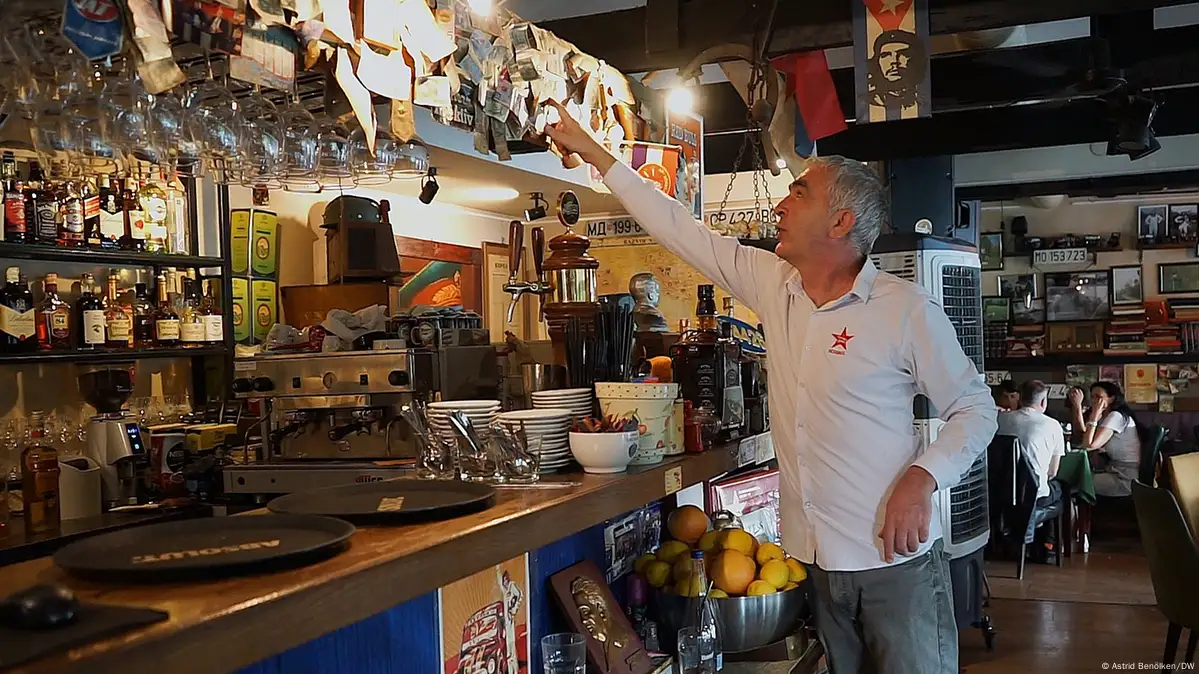Yugo-nostalgia: The restaurant where Yugoslavia never died

This browser does not support the video element.
At first glance, Kafana SFRJ in Belgrade looks more like a small, overcrowded museum than the cafe restaurant it actually is.
Books, records and typewriters are piled on shelves. Old guitars and yellowed newspaper clippings hang on the walls. A gold-colored porcelain tea set featuring the image of former Yugoslav president Josip Broz, widely known as "Tito," takes pride of place in a glass showcase.
Since opening in 2013, Kafana SFRJ's employees and guests have brought together a vast collection of such items as a way of keeping alive the memory of a country that ceased to exist over 30 years ago: Yugoslavia.
But Kafana SFRJ is not the only place to experience Yugo-nostalgia — nostalgia for the time before Yugoslavia broke up into several independent states in the early 1990s. Yugo-nostalgia is very much alive across Serbia.
In politically turbulent and economically uncertain times, many Serbs long for an era when everything seemed simpler and better, something confirmed by Veselinka Kastratovic-Ristic of the Museum of Yugoslavia in Belgrade, which is dedicated to preserving the Yugoslav legacy.
For many, Tito and his Yugoslavia still represent a time when the country mattered on the world stage: Tito led the Non-Aligned Movement, which was not aligned with any bloc during the Cold War. He also came to symbolize the multi-ethnic state that was Yugoslavia before it broke up violently in the early 1990s.
But Tito is also a divisive character: while some see him as a charismatic leader; for others, he was a dictator.